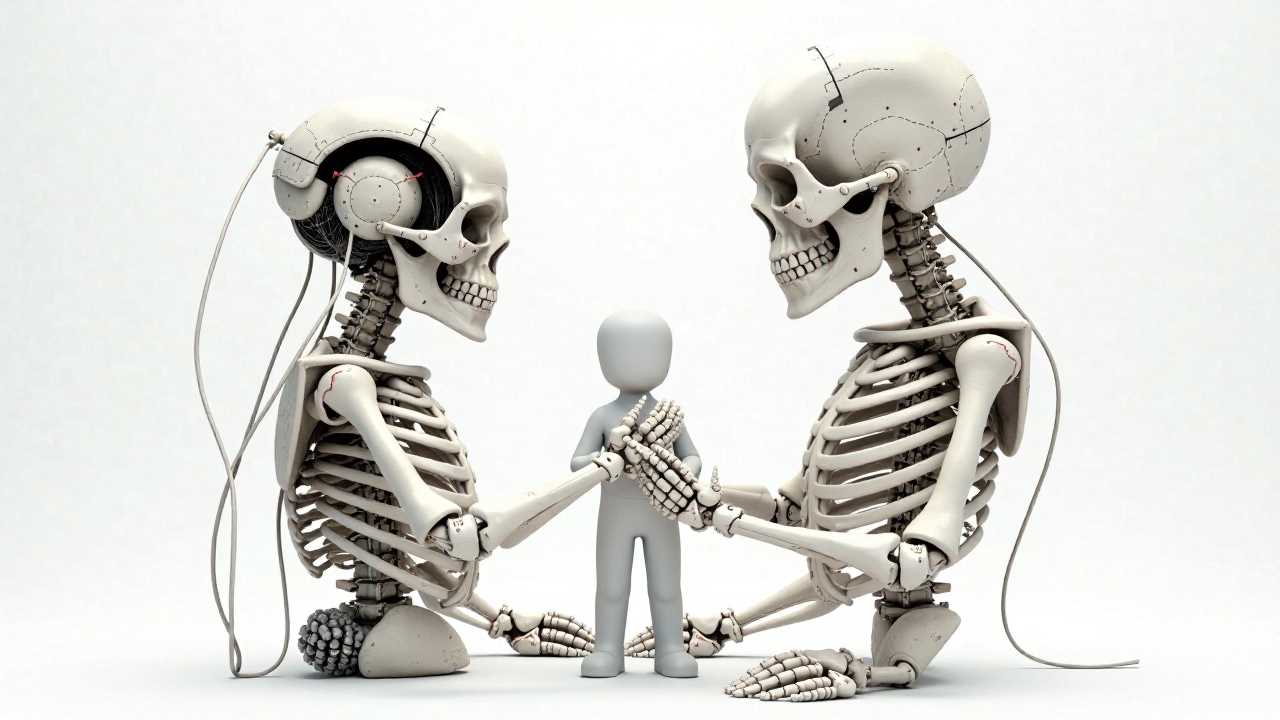
Understanding Character Rigging
Character rigging is a fundamental aspect of 3D animation that involves creating a skeletal structure for a character. This process allows animators to manipulate the character's movements and expressions effectively. For beginners, grasping the basics of bone structure and how it interacts with the character's mesh is crucial. A well-constructed rig facilitates a smooth animation workflow, enabling the animator to focus on creativity rather than technical limitations.
The Importance of Bone Structure
The bone structure serves as the framework for the character. Each bone acts as a joint, allowing for articulation and movement. When setting up the rig, it is vital to ensure that the bones are placed correctly within the character's mesh. This alignment affects how the mesh deforms during animation. Proper placement of bones not only enhances the realism of movements but also simplifies the animation process.
For beginners, it is advisable to start with a simple character model to practice creating a basic bone structure. As you gain confidence, you can experiment with more complex rigs that include additional bones for facial expressions and other intricate movements.
Skinning Techniques: Binding the Mesh to the Rig
Once the bone structure is established, the next step is to apply skinning techniques. Skinning refers to the process of binding the character's mesh to the rig. This step is crucial as it determines how the mesh will deform when the bones are manipulated.
There are several skinning methods available, including smooth skinning and rigid skinning. Smooth skinning allows for a more natural deformation of the mesh, as it influences multiple vertices based on the proximity to the bones. Rigid skinning, on the other hand, assigns vertices to a single bone, resulting in a more mechanical movement. For beginners, smooth skinning is often recommended due to its flexibility and ability to produce more lifelike animations.
Control Systems: Enhancing Animation Workflow
Incorporating control systems into your rig can significantly enhance your animation workflow. Control systems provide a user-friendly interface for animators, allowing them to manipulate the rig without directly interacting with the bones. This abstraction simplifies the animation process, making it more intuitive.
Common control systems include IK (Inverse Kinematics) and FK (Forward Kinematics). IK allows animators to position the end effector of a limb, automatically calculating the necessary rotations for the joints. This is particularly useful for character movements that require the feet or hands to remain grounded. FK, on the other hand, involves rotating each joint in sequence, providing more control over the individual movements of the character.
For beginners, understanding how to implement these control systems will greatly improve your efficiency and creativity in animation.
Mesh Deformation: Achieving Realistic Movement
Mesh deformation is a critical aspect of character rigging that dictates how the character's surface reacts to movements. Proper deformation ensures that the character appears natural and believable during animations.
To achieve realistic mesh deformation, it is essential to pay attention to the weight painting during the skinning process. Weight painting allows you to control how much influence each bone has on the surrounding vertices. By carefully adjusting the weights, you can create smooth transitions and avoid unnatural distortions in the mesh.
As you practice, experiment with different weight distributions to see how they affect the character's movement. This hands-on approach will help you develop a keen eye for what constitutes realistic deformation.
Tips for Beginners in Character Rigging
1. Start Simple: Begin with basic character models to practice rigging techniques. As you gain experience, gradually move on to more complex characters.
2. Study Existing Rigs: Analyze rigs from professional animations to understand how they are constructed. Many software programs offer sample rigs that you can dissect and learn from.
3. Practice Weight Painting: Spend time mastering weight painting, as it is crucial for achieving realistic mesh deformation. Experiment with different weights to see how they impact the character's movement.
4. Utilize Online Resources: Take advantage of tutorials and forums dedicated to character rigging. Engaging with the community can provide valuable insights and tips.
5. Seek Feedback: Share your rigs with peers or mentors to receive constructive feedback. This can help you identify areas for improvement and refine your skills.
The Path to Mastery in Character Rigging
Mastering character rigging is an essential skill for any aspiring 3D animator. By understanding the intricacies of bone structure, skinning techniques, control systems, and mesh deformation, you can create compelling animations that bring characters to life.
As you embark on this journey, remember that practice and experimentation are key. The more you engage with the rigging process, the more proficient you will become. Embrace the challenges, learn from your mistakes, and continue to refine your craft. With dedication and perseverance, you will master the art of character rigging and elevate your animation skills to new heights.
 Digital Art InstructionDIY Infographics DesignMobile Game ArtworkPersonalized Logo Design3D AnimationeBook Covers DesignPrivacy PolicyTerms And Conditions
Digital Art InstructionDIY Infographics DesignMobile Game ArtworkPersonalized Logo Design3D AnimationeBook Covers DesignPrivacy PolicyTerms And Conditions
